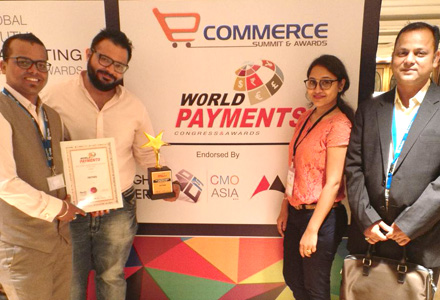One-on-One interview with Abdulaziz Al Jouf – Founder of PayTabs

Evrim Persembe from Startups Middle East interviews Abdulaziz Al Jouf
At 4AM when most of the world is still snoozing, Abdulaziz Al Jouf wakes up without an alarm. By 8AM, when everyone is just about awake, Jouf has already tackled his most pressing problems for the day and is ready to handle all that comes his way in true entrepreneurial spirit.
Entrepreneurship isn’t new for him. He founded seven companies including eCommerce ones. During this time, Jouf realized that all online companies faced a common problem when it came to payments. The market was painfully slow in its execution. It took six months just to get to the bank to set up the gateway and a year to start your first transaction.
Jouf had the idea brimming at the back of his mind since 2010. No company existed at the time to fulfil this market gap. Those who did weren’t scaling beyond limited geographies. By the beginning of 2013, Jouf became sure of his idea and started working on a prototype.
A few months later Jouf chanced upon a meeting with someone who showed a lot of interest in his product. The meeting extended to four hours and several cups of coffee. Only next day did he discover that the person he met was a part of Wa’ed Ventures.
Even though Jouf had prior entrepreneurial experience, funding was new because he had always been bootstrapped in his startups before. It was like this was a story waiting to happen. Once the funding came, new hires helped build the rudimentary system further and by December, they had their first transaction.
During the initial days, PayTabs had to hard-code every merchant who joined. They had to spend hours to convince the bank that this technology was set to disrupt the way transactions were being carried out online. By the end of the month, they had 300 requests in their hand. Jouf knew that this was good, but how scalable would the technology really be? He found his answer when in a month’s time the company processed quarter million dollars.
In fact, working with banks to execute this entire system has been PayTabs’ biggest challenge. During his initial days, Jouf met a banker with 20 years of experience. The banker outright disapproved of his idea and refused investment. He said it would either kill Jouf or take forever to execute. Jouf walked out of the meeting thinking it was probably then a good idea! Anytime you try being in disruptive technology, it is generally met with resistance as people have a comfort zone with what is currently working. It turns out that the same reason is also why PayTabs has very few competitors who can match up numbers.
The investment almost sounds like cake walk to outsiders but Jouf knows the hard work he had to put in for 13 months before he got his first investment cheque of 2.5M. If he were to do the whole thing again, the one thing he would do differently would be to raise his second and subsequent rounds of funding as quickly as possible.
Speaking about the start-up ecosystem in Saudi Arabia, he said that things are encouraging now with many more investors than before. But his advice to budding entrepreneurs is to not be greedy and push for a clean evaluation from potential investors before talking money on the table. Earlier investors would wait for the company to show proof of market, but now they are much more open to even funding the idea and the entrepreneur’s execution capabilities. Entrepreneurs, in turn, shouldn’t be avaricious, and look to work with investors who have domain expertise.
On a parting note, Jouf humbly mentions that he still has a lot to learn about finance. For a company that has changed the way transactions are done in 17 countries, we keep our fingers crossed to see how things pan out in the next few years.
Listen to the podcast on the following links:
1. iTunes: https://itunes.apple.com/bh/po
2. Stitcher: https://www.stitcher.com/podca
3. Website: http://startupsmiddleeast.com
4. Facebook: https://www.facebook




